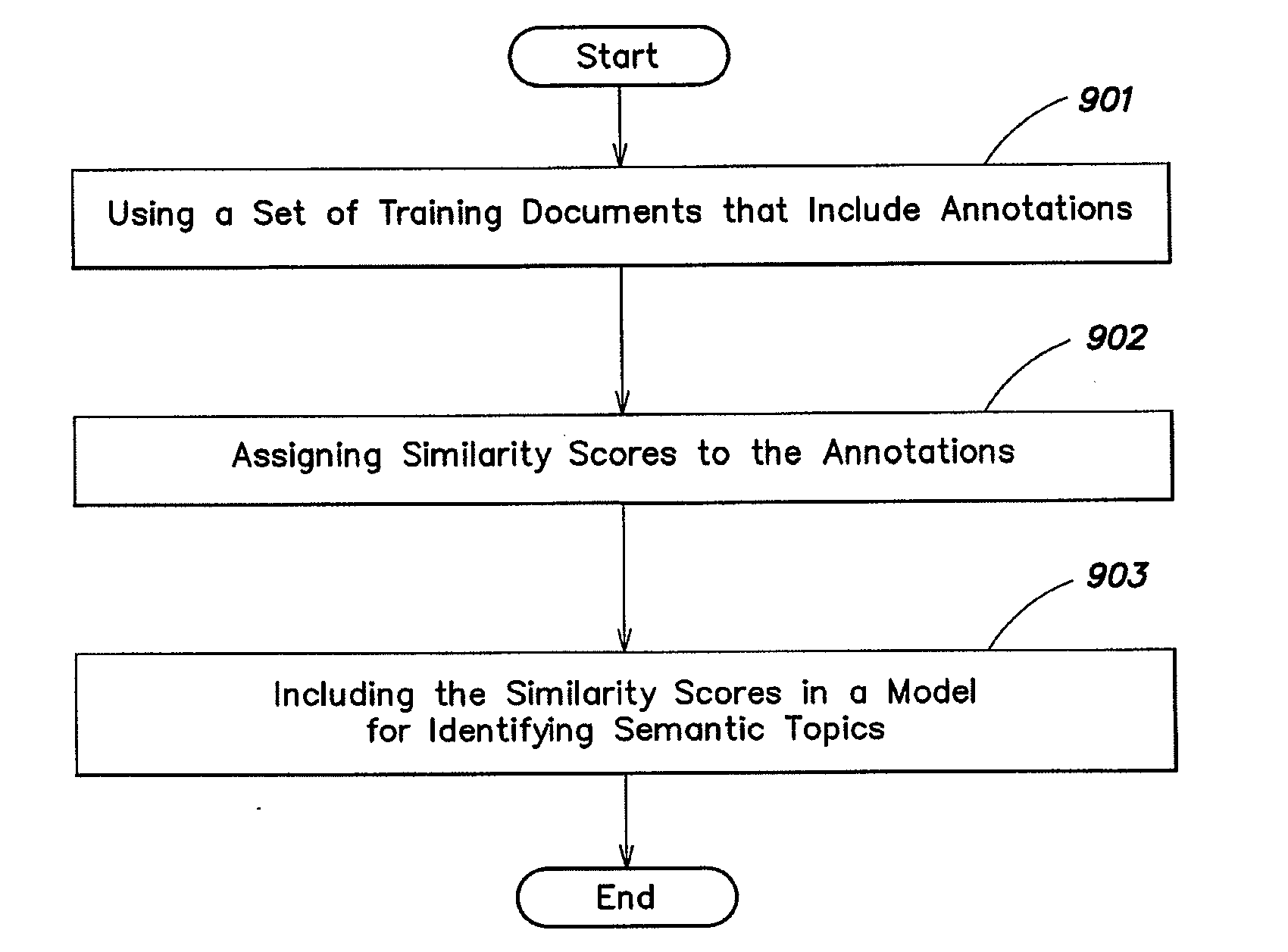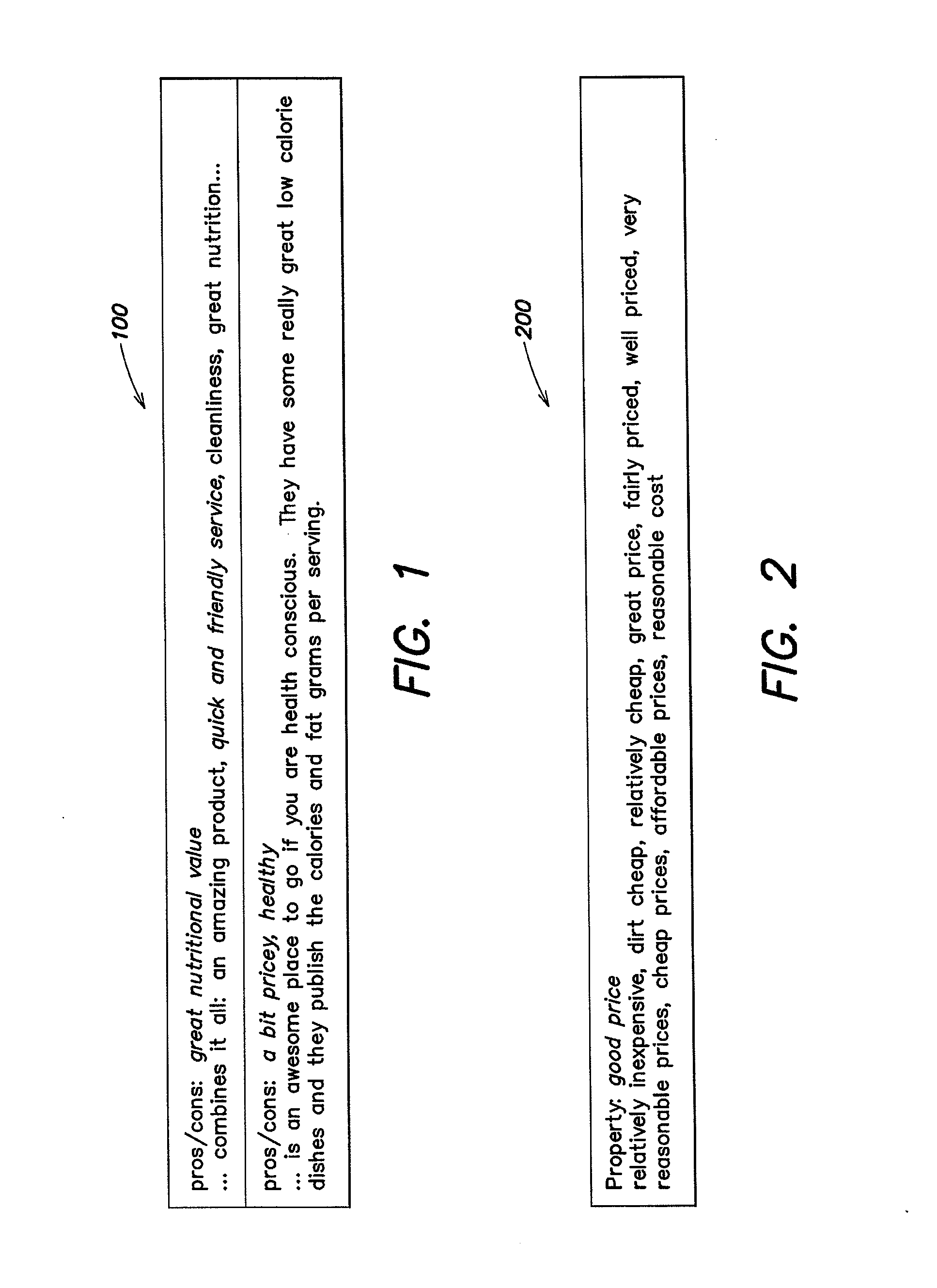Methods and systems for automatically summarizing semantic properties from documents with freeform textual annotations
a technology of semantic properties and freeform text, applied in the field of natural language understanding, can solve the problems of not being able to take advantage of free-text annotations associated with documents, difficult to identify in advance all phrases relating to a semantic topic, and the cost of performing expert annotations in the expert annotation corpus, so as to improve the ability of the model to identify semantic topics in work documents
- Summary
- Abstract
- Description
- Claims
- Application Information
AI Technical Summary
Benefits of technology
Problems solved by technology
Method used
Image
Examples
Embodiment Construction
1 Overview
[0036]Identifying the document-level semantic properties implied by a text or set of texts is a problem in natural language understanding. For example, given the text of a restaurant review, it could be useful to extract a semantic-level characterization of the author's reaction to specific aspects of the restaurant, such as the food, service, and so on. As mentioned above, learning-based approaches have dramatically increased the scope and robustness of such semantic processing, but they are typically dependent on large expert-annotated datasets, which are costly to produce.
[0037]Applicants have recognized an alternative source of annotations: free-text keyphrases produced by novice end users. As an example, consider the lists of pros and cons that often accompany reviews of products and services. Such end-user annotations are increasingly prevalent online, and they grow organically to keep pace with subjects of interest and socio-cultural trends. Beyond such pragmatic co...
PUM
 Login to View More
Login to View More Abstract
Description
Claims
Application Information
 Login to View More
Login to View More - R&D
- Intellectual Property
- Life Sciences
- Materials
- Tech Scout
- Unparalleled Data Quality
- Higher Quality Content
- 60% Fewer Hallucinations
Browse by: Latest US Patents, China's latest patents, Technical Efficacy Thesaurus, Application Domain, Technology Topic, Popular Technical Reports.
© 2025 PatSnap. All rights reserved.Legal|Privacy policy|Modern Slavery Act Transparency Statement|Sitemap|About US| Contact US: help@patsnap.com



